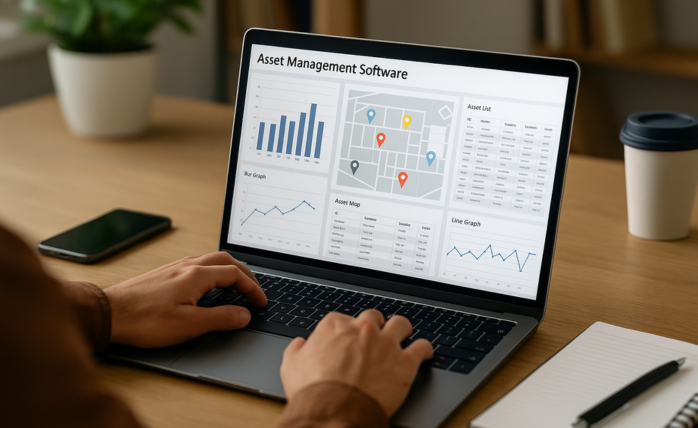Entrepreneurs
3 Pillars of E-Commerce Marketing and How They Can Impact Your Business
If you want it to be successful, you need to identify your customers, find the best ways to speak to them, then optimize your website for conversions.

Anyone can start a business. But getting the word out successfully to the right crowd in a way that resonates with them can be a challenge. That’s why I teach my clients about the three pillars of marketing. It’s not just theory, I regularly use these pillars in each and every one of my companies and have found that any new marketing initiative should always, without question, be built around these concepts. By implementing these pillars, you’ll be able to set yourself up for growth and success.
So What Are the 3 Pillars of Marketing?
The three pillars of marketing are: market, messaging, and monetization. Each one has an important role in your business’ growth and development. If you get these right, you’ll be on your way to growing your company.
Here’s how it breaks down:
1. Market: Start by Identifying Your Target Audience
You can have the best products and services in the world, but if you’re not marketing to the right people, you’ll drive yourself up the wall wondering why you aren’t getting the conversions you want. That’s why it’s important to identify your target market; the group of people who are interested in your product or service.
Identifying your market is the first step toward creating a marketing strategy that works. It will help you to reach your audience more effectively.
Here are two steps you’ll want to take:
Build an Avatar of Your Customer
It is one thing to know you are talking to moms. It is another thing to know you are talking to moms between the age of 25-35, with one child, dual income family, and she has the hobbies of baking and gardening. The more you know about your customer, the more targeted your messaging can be. This is essentially market research that speaks directly to your ideal audience. Data append services like AtData help when it comes to collecting this data, allowing you to fill in any gaps you may have.
Segment Your Market
Market segmentation, or dividing your market into specific groups, is the secret sauce to more effective target marketing.
When I launched my ecommerce business RTA Cabinet Store, I discovered five different customer groups with very different reasons for buying cabinets. Those five groups were homeowners, property investors, real estate agents, contractors, and property managers. In fact, this was only a broad-level assessment. I broke it down even further and segmented those groups according to other demographics. As a result, I tailored our marketing efforts to appeal to each segment. We drastically improved our conversion rates and increased customer lifetime value by over 60%.
2. Messaging: Where Are Your Customers and What Marketplaces Should You Be On?
Today’s customers are spoilt for choice, and if your messaging and image don’t resonate with them, other options are just a scroll away.
Defining your unique selling proposition (USP) is an integral part of messaging. Your USP is what sets you apart from your competitors, and it’s the reason why your customers should choose you over others. Your messaging should revolve around your USP and highlight the benefits of your product or service.
What Marketplaces Should You Be On?
Understanding the income level and buying patterns of your audience would make it easier to understand what marketplaces to use. Higher-end products most likely won’t sell on Walmart.com, for example, but may sell great on Target.com. Think about where your target audience is going to be, and go to them.
What Social Channels Should You Use?
Figure out where your target customer spends their time and create a social media presence on that platform. Understanding the age bracket dictates which social platforms to focus on. I personally don’t believe you need to be on ALL of them, you just need to be on the right ones. It’s more than just setting up an account and hoping for the best. In most cases, this involves using a combination of paid advertising and clever marketing campaigns to expand your reach and drive relevant prospects to your website.
3. Monetization: Strategies to Boost Your Revenue
Once you’ve got an audience that’s visiting your website, it’s time to start turning a profit. This is the part where you start making money.
Two effective ways to increase revenue are through new customer acquisition and increasing customers’ purchases per order.
New Customer Acquisition: Start by Identifying Your Customer’s Lifetime Value
With the iOS update and concerns over privacy, the cost per acquisition of new customers keeps rising.
If you know how much a customer is worth to your company, then you’ll know exactly how much you can spend to acquire new customers.
Selling to Existing Customers: Increase Revenue Without Increasing Traffic Volume
Look for strategies to increase revenue without having to increase traffic volume. It is far easier to sell to an existing customer versus cold traffic. This involves finding ways to improve your average order value, looking to boost your conversion rates by ensuring that you’re targeting the right customers in the first place.
Tips for Increasing Your Revenue:
- Set clear revenue goals and make a detailed plan to achieve them. Look into measuring and improving important ecommerce key performance indicators (KPIs) such as website traffic, conversion rates, average order value, etc.
- Increase customer lifetime value (CLV) and average order value (AOV). You can improve your customer lifetime value through loyalty programs, subscriptions, autoship programs, giving discounts for bulk orders, and offering personalized experiences to keep your customers coming back.
- Use automation and technology to save time and scale your efforts. There are a lot of great plug-ins and apps for Shopify and WooCommerce that help with almost every aspect of online business including email marketing, cross-selling, customer review collection, and logistics management.
- Omnichannel selling or branching out into other ecommerce platforms. A common argument I hear is ‘’x platform isn’t worth it since I only get x revenue from it.’’ But this is only true if you’re not looking at your business holistically. Each product exposure is a potential touch point. A great example is the relationship between Amazon and a Shopify store. Someone may come to your site but buy from you on Amazon because of Prime shipping. Or they might find you on Amazon, but go to your website for a coupon code. Smart marketers know how to play off this symbiotic relationship and use it to their advantage.
- Prioritize customer service. I think we can all agree that customer service has fallen to the wayside at most large companies. Most customers want an immediate answer, not a response in 48 hours. If you can be the company that is always available, even if your price is sometimes higher, timing becomes the advantage. With all of the advancements in AI technology, it’s super easy even for a 1-man company to have 24-hour service on some level.
- Use analytics. Finally, use analytics to see where your customers are coming from and how many visitors end in a conversion. You’ll know which ad campaigns are working and what you should be doing more of.
I’ve used the 3 M’s to grow my own companies and to help over 150 other ecommerce brands reach 7-8 figures through my consulting services and Ecommerce Accelerator events. You can open a business today with just a few clicks. But if you want it to be successful, you need to identify your customers, find the best ways to speak to them, then optimize your website for conversions.
Change Your Mindset
The Silent Skill That Makes People Respect You Instantly
What truly earns respect and why most people go about it the wrong way

Everybody craves respect but not everyone earns it. Some people believe that a title, years of experience, or a position of authority automatically entitles them to respect. (more…)
Entrepreneurs
The Essential Skills Every Entrepreneur Needs In 2026
Success in the digital age isn’t about luck. It’s about mastering the skills that separate dreamers from doers.

When I was 22 years old, I started my first side hustle as a ghostwriter. (more…)
Business
The Hidden Money Pit in Your Operations (and How to Use It)
See how smart asset management software is quietly saving businesses thousands in wasted time, stock, and maintenance.

Trimming unnecessary expenses and minimizing resources is a general practice in running a business effectively. Asset management software can help you achieve those goals. (more…)
Business
Thinking of Buying A Business? These 6 Sectors Quietly Produce the Best Deals
Before you buy your next venture, check out the sectors where successful businesses are changing hands every day.

All entrepreneurs have a desire to be the masters behind a successful venture. Buying an established business is a great choice for many. This provides instant access to an established market with existing infrastructure and clients. (more…)
-

 Did You Know4 weeks ago
Did You Know4 weeks agoThe Success Patterns You Inherited (And Didn’t Notice)
-

 Entrepreneurs3 weeks ago
Entrepreneurs3 weeks agoThe Essential Skills Every Entrepreneur Needs In 2026
-

 Business4 weeks ago
Business4 weeks agoThe Hidden Money Pit in Your Operations (and How to Use It)
-

 Change Your Mindset3 weeks ago
Change Your Mindset3 weeks agoHow to Turn Your Mind Into Your Greatest Asset (Instead of Your Enemy)
-

 Change Your Mindset2 weeks ago
Change Your Mindset2 weeks agoThe Silent Skill That Makes People Respect You Instantly
-

 Life2 weeks ago
Life2 weeks ago10 Research-Backed Steps to Create Real Change This New Year
-

 Tech2 weeks ago
Tech2 weeks agoWhat’s in a Name? How to Get Your Domain Right
-

 Did You Know1 week ago
Did You Know1 week agoHow Skilled Migrants Are Building Successful Careers After Moving Countries
























